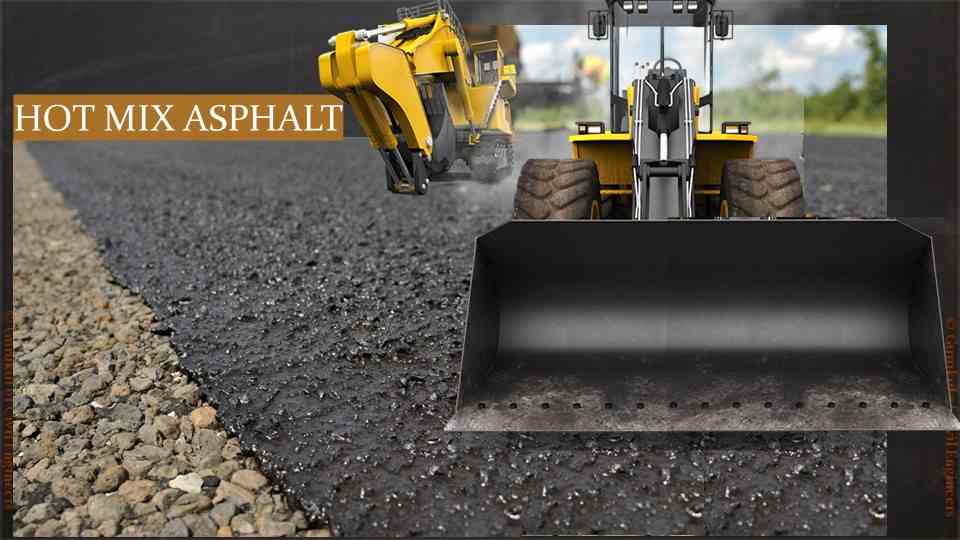Opening the Secrets of Hot Mix Asphalt Technology
Checking out the depths of hot mix asphalt innovation reveals a globe where precise processes and precise formulations converge to form our roadways and framework. The combination of aggregates, fillers, and binders isn't merely a construction task but a tactical orchestration of durability and performance. As we peer right into the detailed dancing of parts, a tapestry of strength and sustainability unfolds. However what exists underneath this surface area of asphaltic mastery, and what tricks wait to be introduced in the world of paving advancements?
Significance of Warm Mix Asphalt
Hot Mix Asphalt plays an important role in modern facilities advancement due to its toughness and cost-effectiveness. As the most generally made use of leading product for roadways, freeways, and parking lots, Hot Mix Asphalt offers a range of benefits that contribute to its importance in construction tasks.
The resilience of Hot Mix Asphalt stems from its composition, which includes accumulations, binder, and filler products that are meticulously picked and blended to satisfy particular performance requirements. This precise combination results in a solid and versatile pavement that can withstand regular usage without considerable deterioration. Warm Mix Asphalt is 100% recyclable, additional improving its sustainability and environmental advantages. On the whole, the value of Hot Mix Asphalt in infrastructure growth can not be downplayed, as it remains to be a keystone of modern-day building practices.
Components of Asphalt Mixes
The composition of asphalt mixes consists of very carefully picked aggregates, binder, and filler materials that are important for attaining details efficiency requirements. Aggregates are the main element of asphalt blends, supplying toughness and security. The binder, typically bitumen or asphalt cement, holds the aggregates together and offers versatility and toughness to the mix.
The mix and percentage of these parts play a substantial role in determining the quality and efficiency of the asphalt mix. Engineers thoroughly create the mix to satisfy certain demands, thinking about aspects like web traffic volume, climate conditions, and sidewalk life-span. Correct choice and balancing of aggregates, binder, and fillers are important for creating durable, long-lasting asphalt sidewalks.
Combining and Manufacturing Methods

As soon as the accumulations are chosen, the binder, commonly asphalt concrete, is contributed to bind the products with each other. The binder's high quality and amount substantially affect the mix's versatility, stamina, and resistance to ecological aspects. Furthermore, fillers like hydrated lime or Portland concrete might be integrated to improve particular qualities of the asphalt mix, such as its workability or moisture resistance.
Throughout manufacturing, the aggregates and binder are heated, typically in between Full Article 250-325 ° F(121-163 ° C ), to assist in mixing and guarantee proper layer of the accumulations. The mixing procedure has to be complete to accomplish a homogeneous blend that promotes the desired efficiency attributes of the asphalt. Different techniques, such as set mixing or drum blending, are utilized to attain regular and premium asphalt mixes for construction tasks.
Elements Influencing Asphalt Performance
Factors influencing asphalt efficiency incorporate a range of variables that affect the longevity, longevity, and general high quality of asphalt sidewalks. One key element is the quality of materials utilized in the asphalt mix.

Ecological conditions likewise affect asphalt performance. Temperature level variations, wetness seepage, and web traffic lots can all impact the structural honesty of the pavement. Layout factors to consider, such as sidewalk thickness and water drainage, are crucial in making sure the lasting performance of the asphalt sidewalk. By thoroughly considering these factors, professionals and designers can maximize asphalt efficiency and boost the life span of pavements.
Sustainable Practices in Asphalt Technology
WMA enables for the manufacturing and see it here placement of asphalt blends at reduced temperatures contrasted to traditional hot-mix asphalt, resulting in minimized power consumption and greenhouse gas exhausts. The use of porous asphalt blends can help reduce stormwater drainage issues by enabling water to penetrate through the sidewalk linked here and into the ground, advertising natural water purification and recharge procedures.
Conclusion
To conclude, warm mix asphalt innovation plays an essential role in contemporary framework growth because of its resilience and cost-effectiveness. By meticulously stabilizing components, employing appropriate mixing strategies, and considering various elements, engineers can produce premium asphalt mixes that stand up to rush hour loads and severe weather conditions. Welcoming lasting techniques, such as utilizing recycled materials and warm-mix technologies, better improves the environmental friendliness of asphalt technology.
Blending and production techniques in warm mix asphalt innovation involve the precise mix and processing of aggregates, binder, and fillers to develop a high-performance and resilient asphalt mix.Factors affecting asphalt performance encompass an array of variables that affect the resilience, long life, and general quality of asphalt sidewalks. Sustainable practices in asphalt modern technology include numerous efforts aimed at minimizing the environmental influence of asphalt production and paving procedures. By integrating redeemed asphalt pavement (RAP) and recycled asphalt shingles (RAS) right into brand-new asphalt mixes, the industry can dramatically decrease the intake of raw products and power, while likewise lowering garbage dump waste.
WMA permits for the production and positioning of asphalt mixes at reduced temperatures contrasted to traditional hot-mix asphalt, resulting in minimized energy usage and greenhouse gas exhausts.